Abstract
OBJECTIVE: To examine the determinants of postsurgery length of stay (LOS) and inpatient mortality in the United States (California and Massachusetts) and Canada (Manitoba and Quebec). DATA SOURCES/STUDY SETTING: Patient discharge abstracts from the Agency for Health Care Policy and Research Nationwide Inpatient Sample and from provincial health ministries. STUDY DESIGN: Descriptive statistics by state or province, pooled competing risks hazards models (which control for censoring of LOS and inpatient mortality data), and instrumental variables (which control for confounding in observational data) were used to analyze the effect of wait time for hip fracture surgery on postsurgery outcomes. DATA EXTRACTIONS: Data were extracted for patients admitted to an acute care hospital with a primary diagnosis of hip fracture who received hip fracture surgery, were admitted from home or the emergency room, were age 45 or older, stayed in the hospital 365 days or less, and were not trauma patients. PRINCIPAL FINDINGS: The descriptive data indicate that wait times for surgery are longer in the two Canadian provinces than in the two U.S. states. Canadians also have longer postsurgery LOS and higher inpatient mortality. Yet the competing risks hazards model indicates that the effect of wait time on postsurgery LOS is small in magnitude. Instrumental variables analysis reveals that wait time for surgery is not a significant predictor of postsurgery length of stay. The hazards model reveals significant differences in mortality across regions. However, both the regressions and the instrumental variables indicate that these differences are not attributable to wait time for surgery. CONCLUSIONS: Statistical models that account for censoring and confounding yield conclusions that differ from those implied by descriptive statistics in administrative data. Longer wait time for hip fracture surgery does not explain the difference in postsurgery outcomes across countries.
Full text
PDF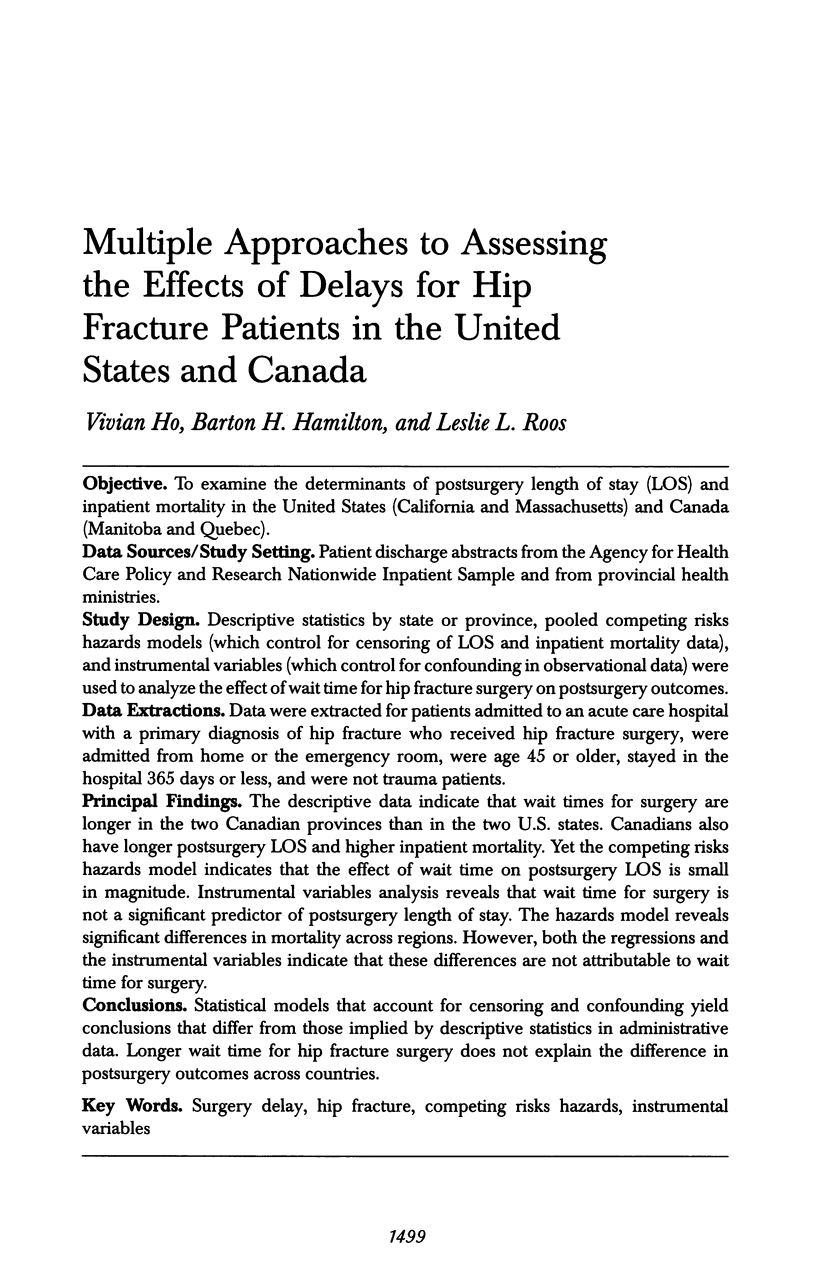
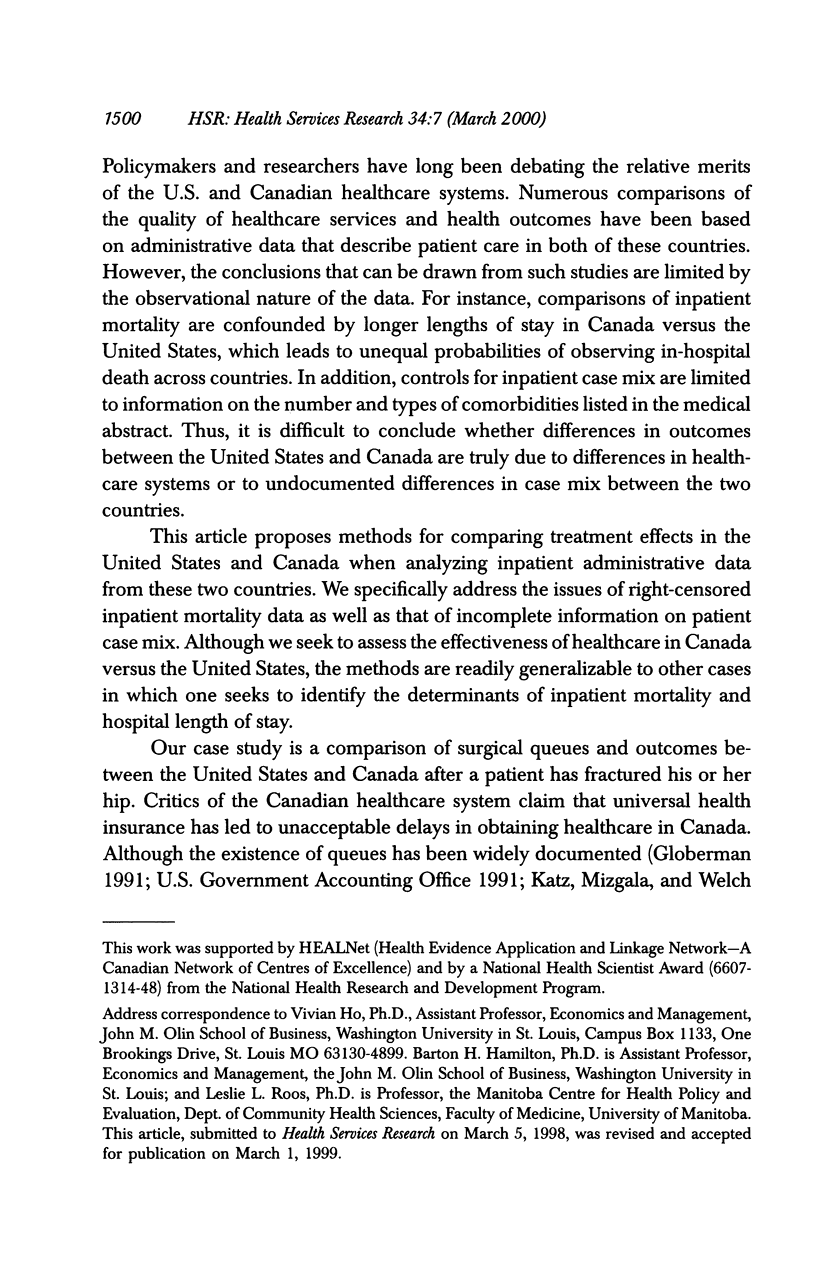
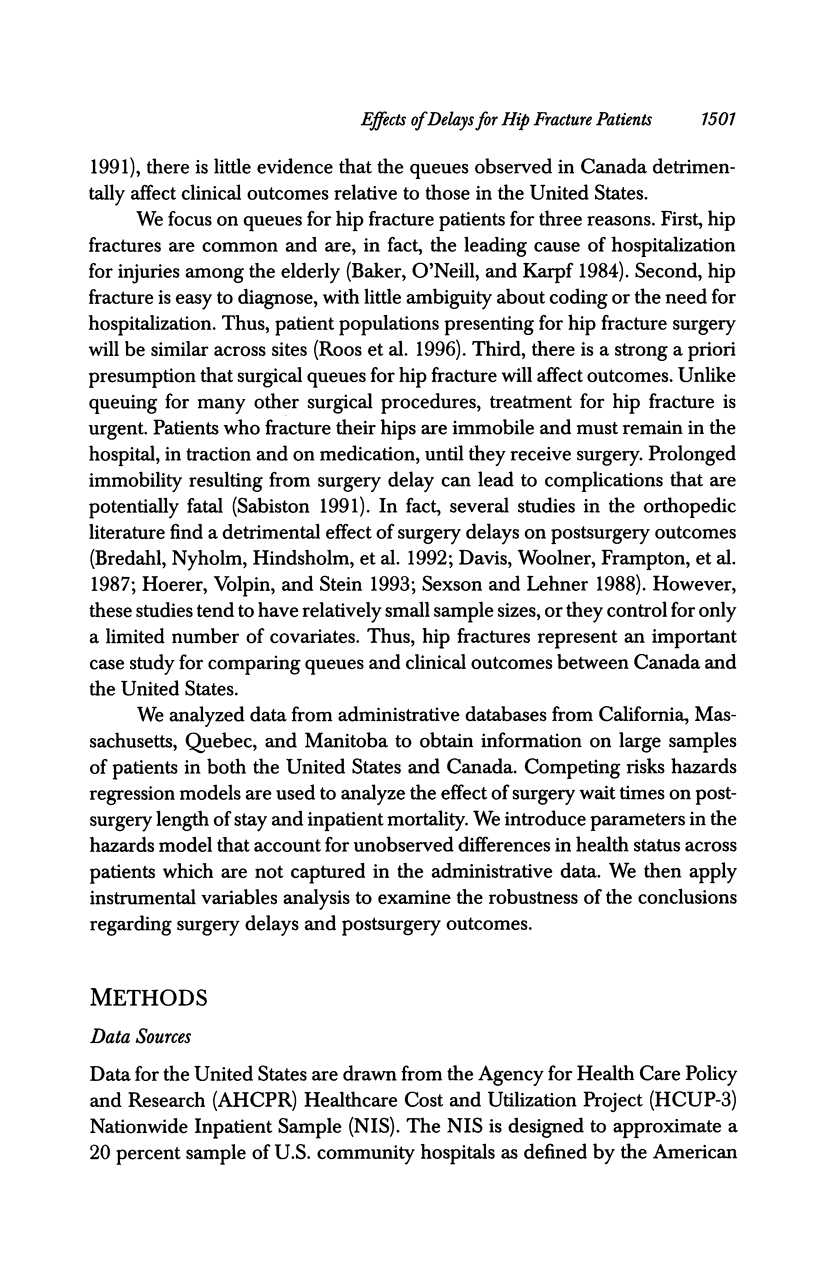
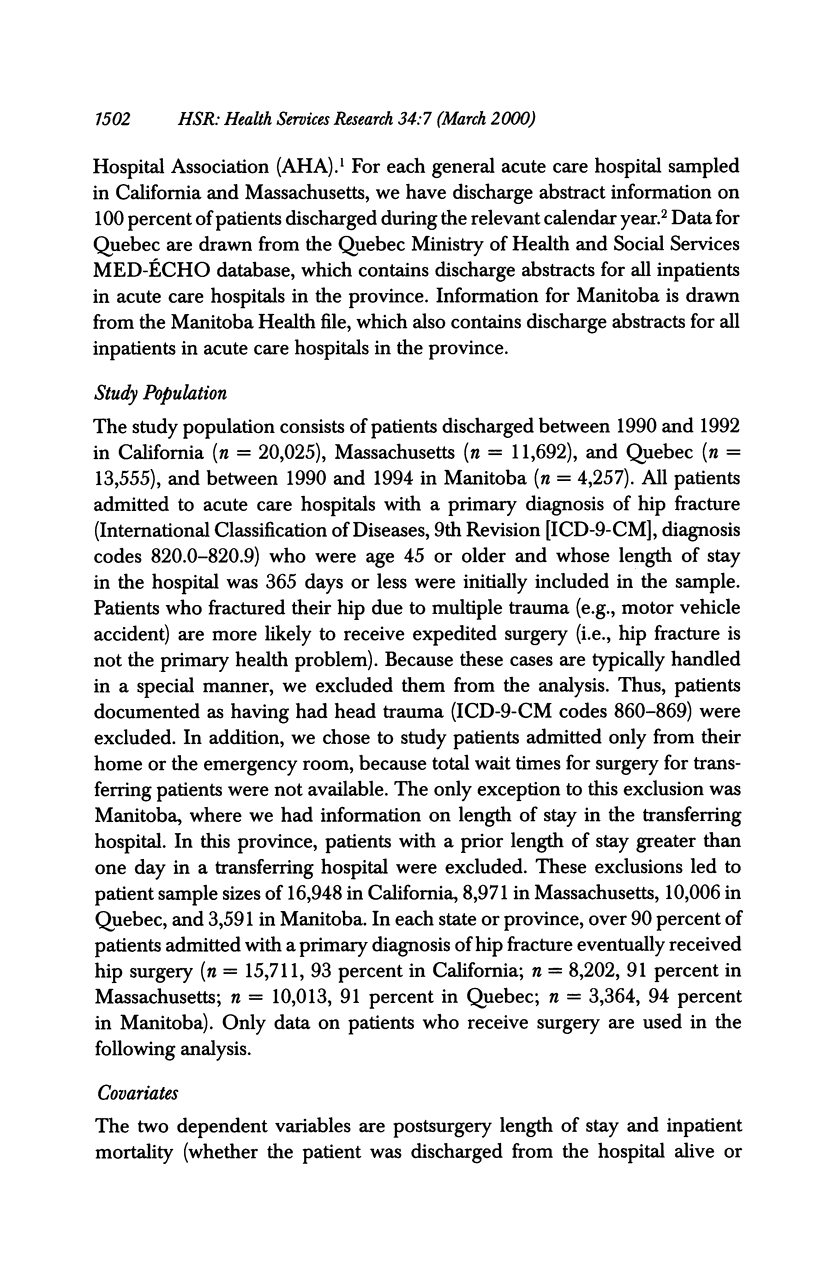
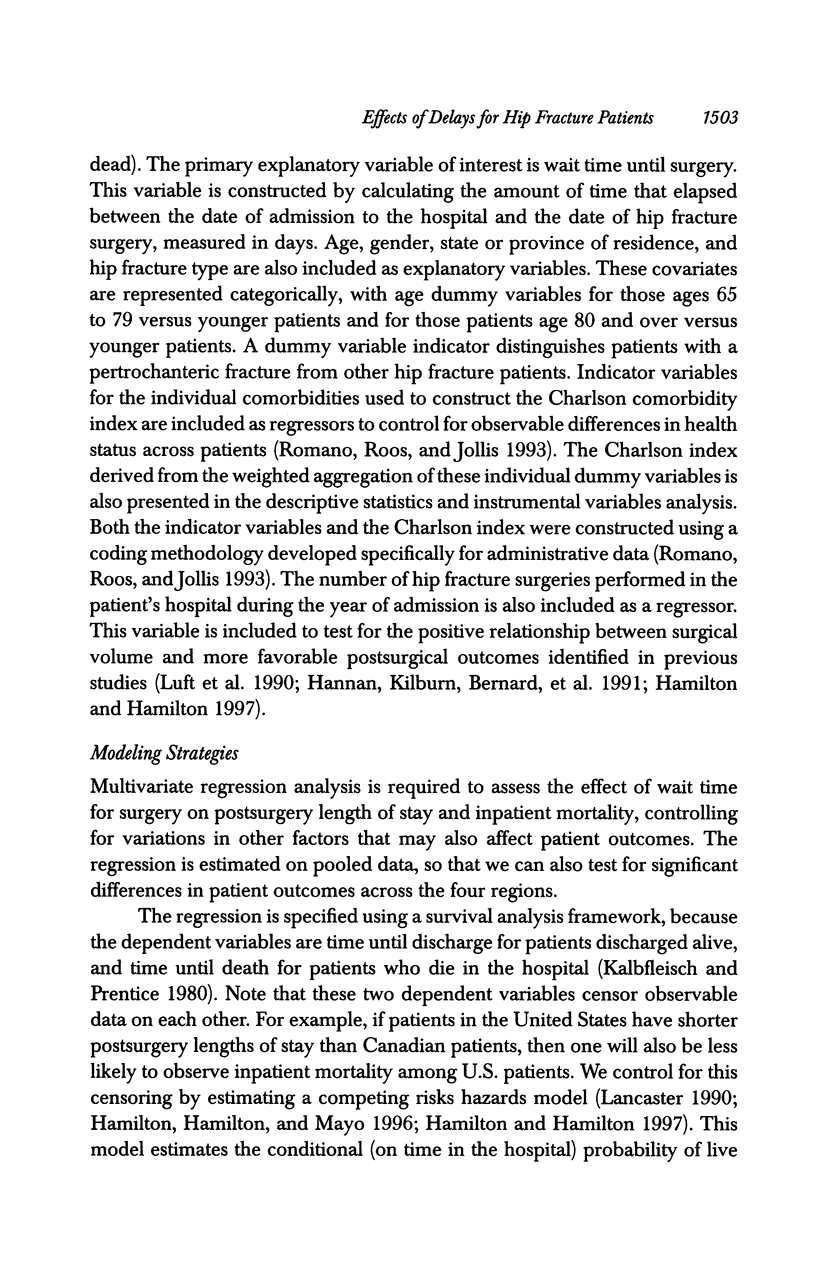
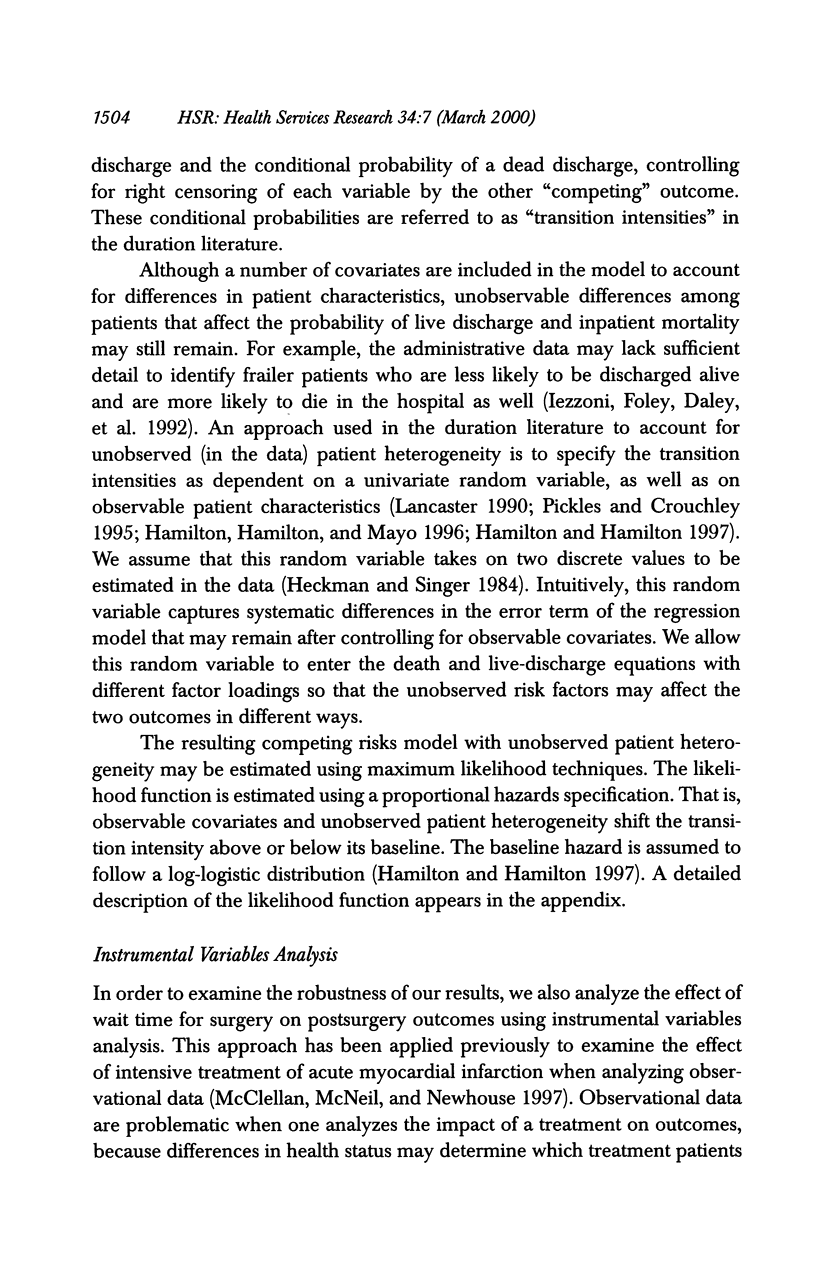
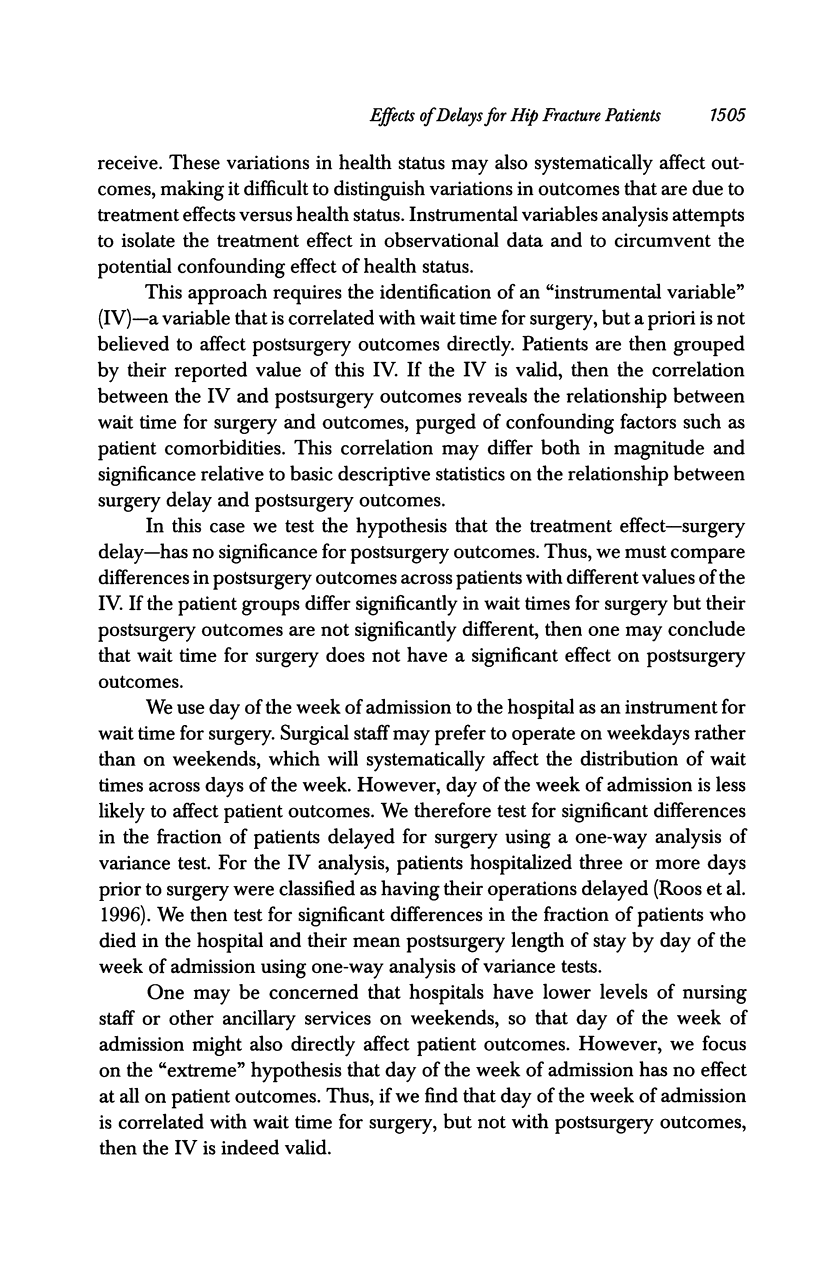
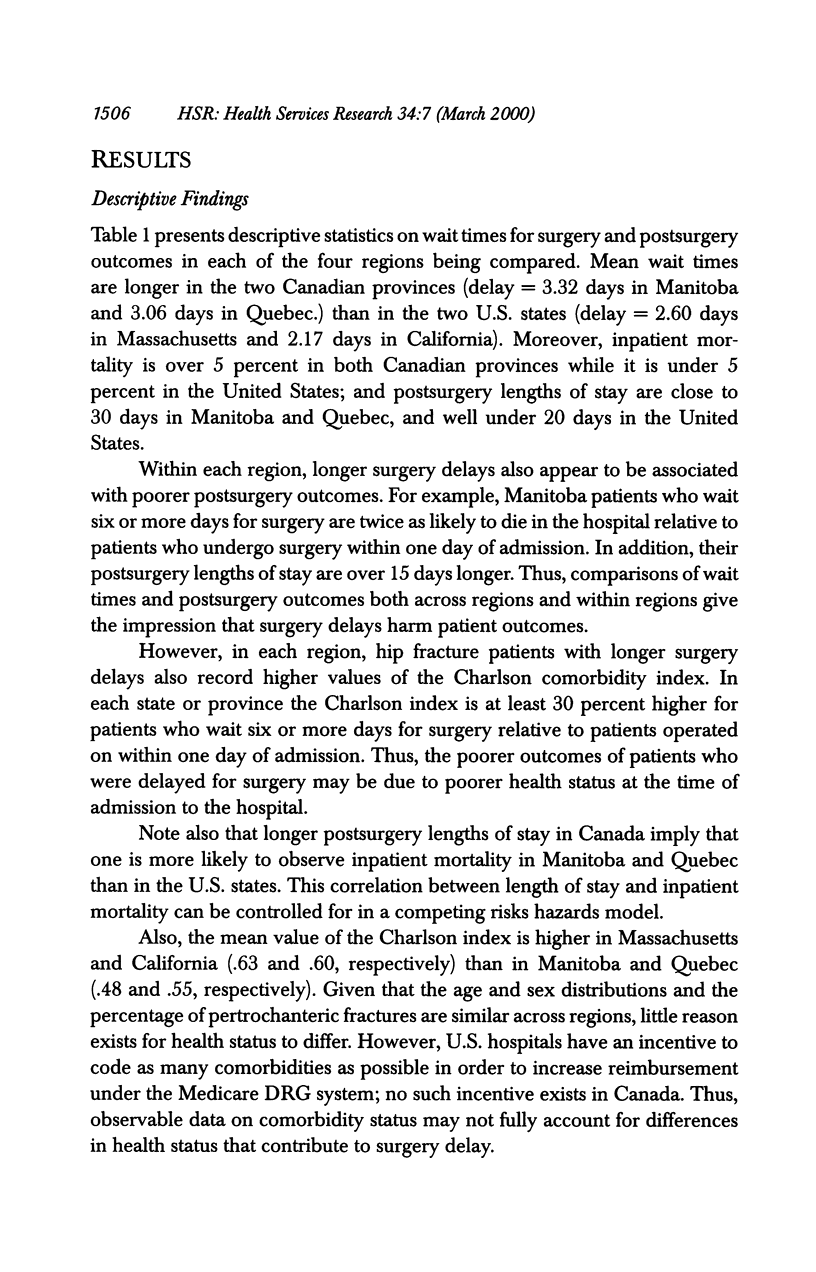
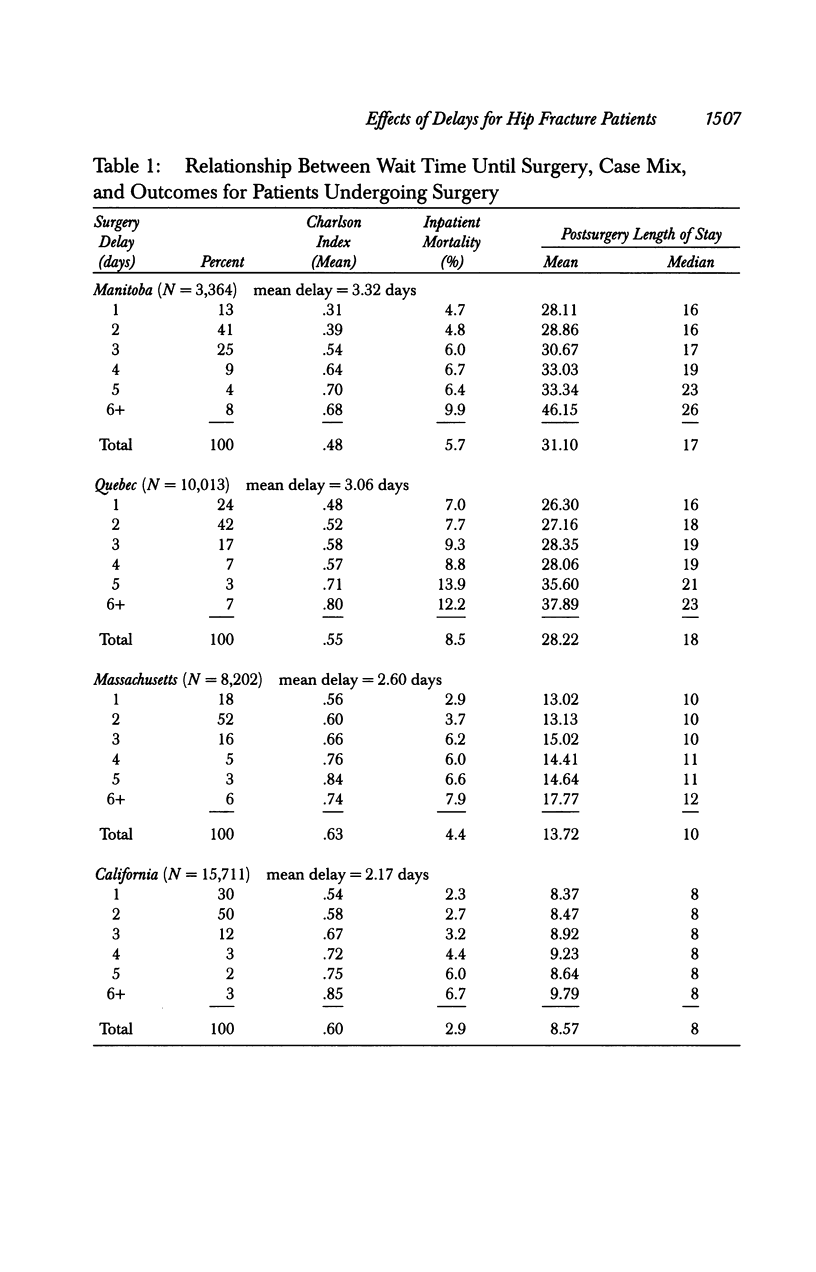
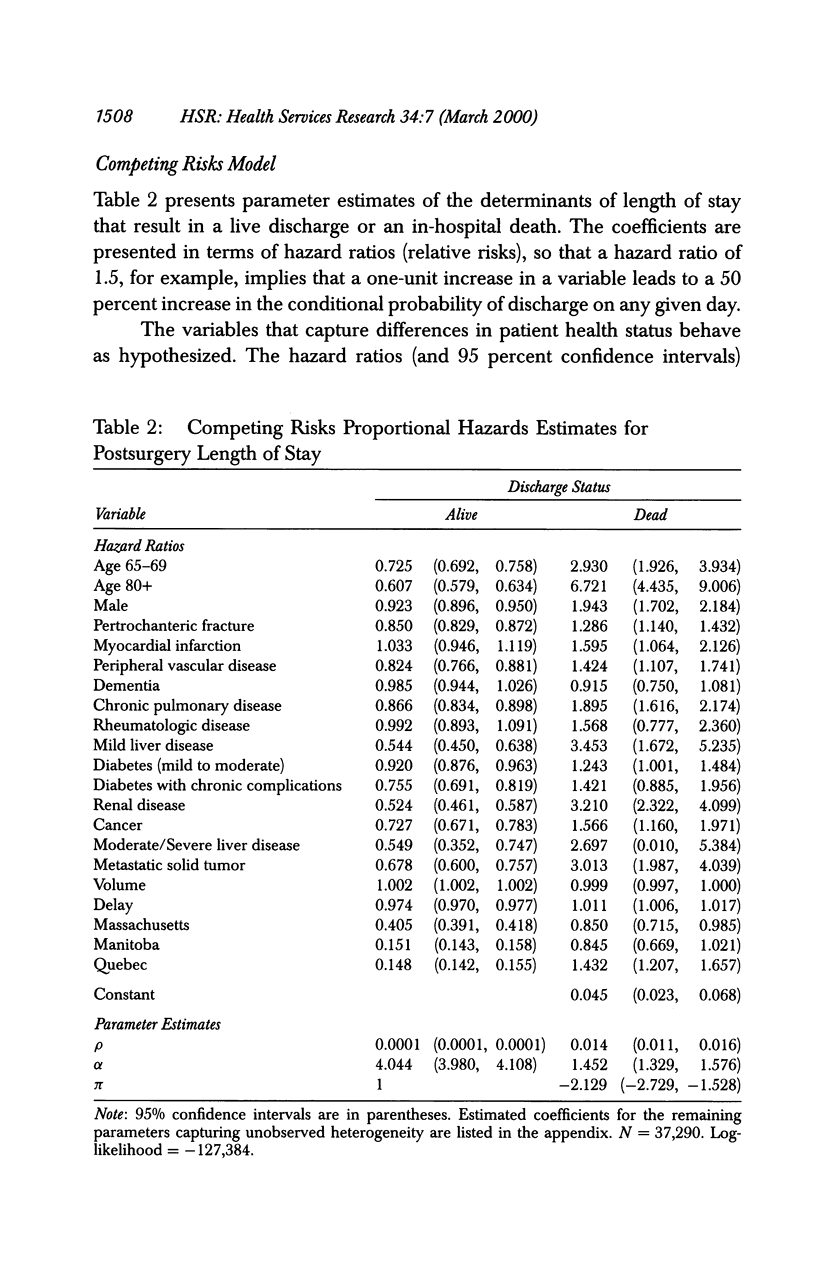
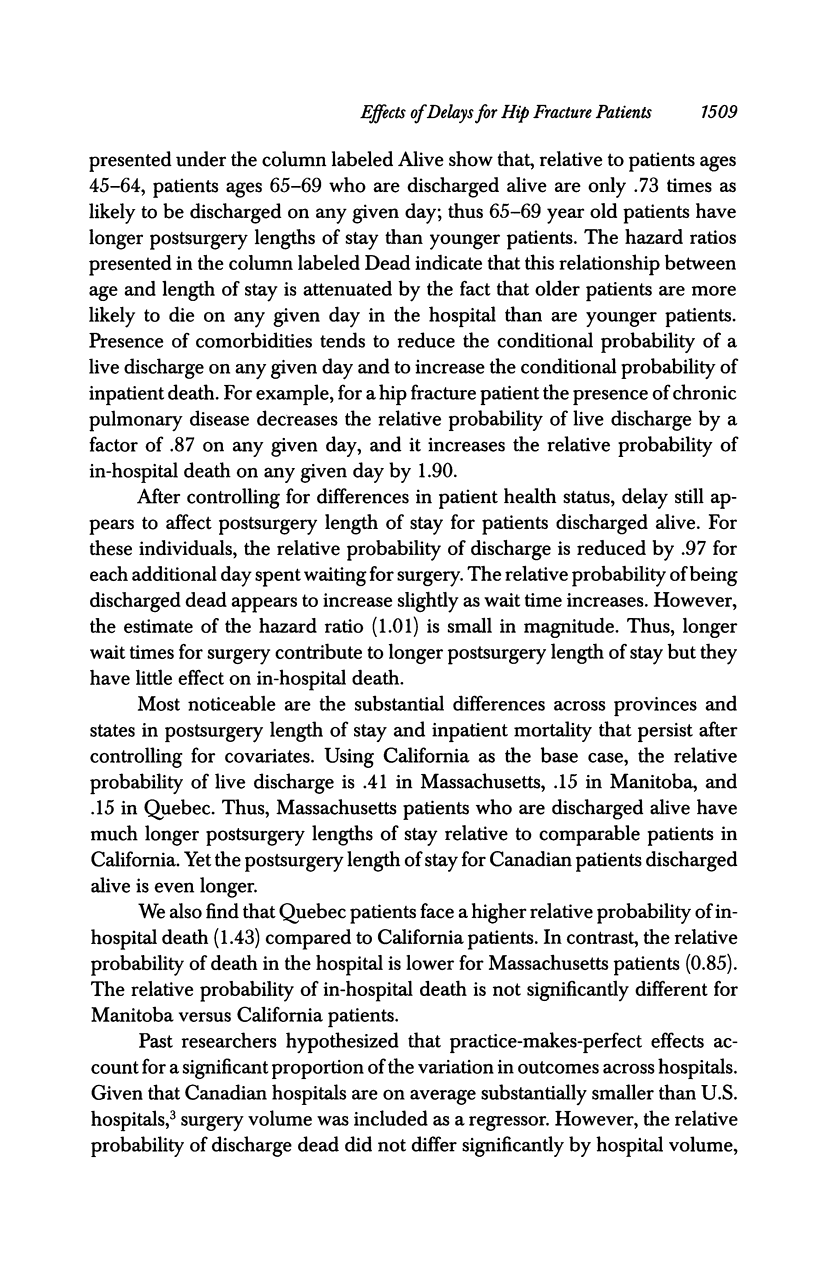
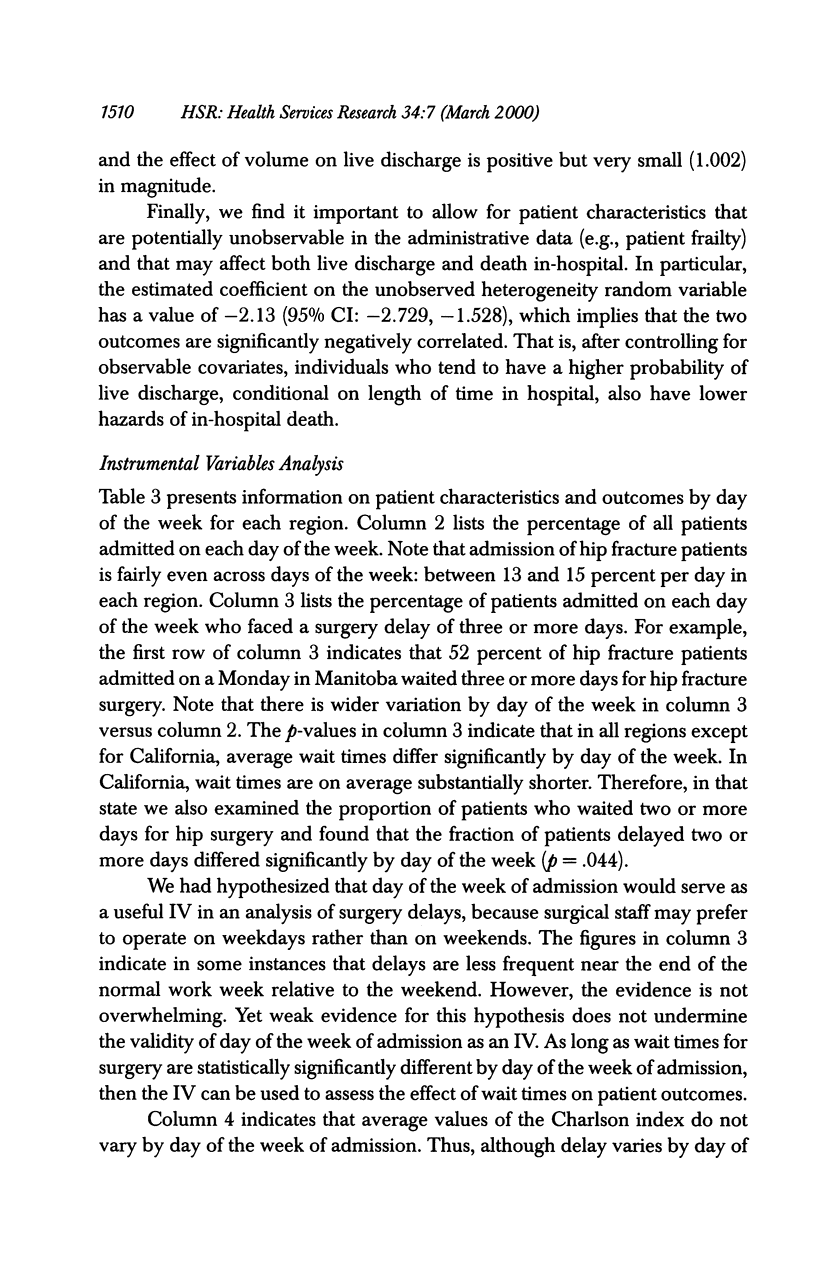
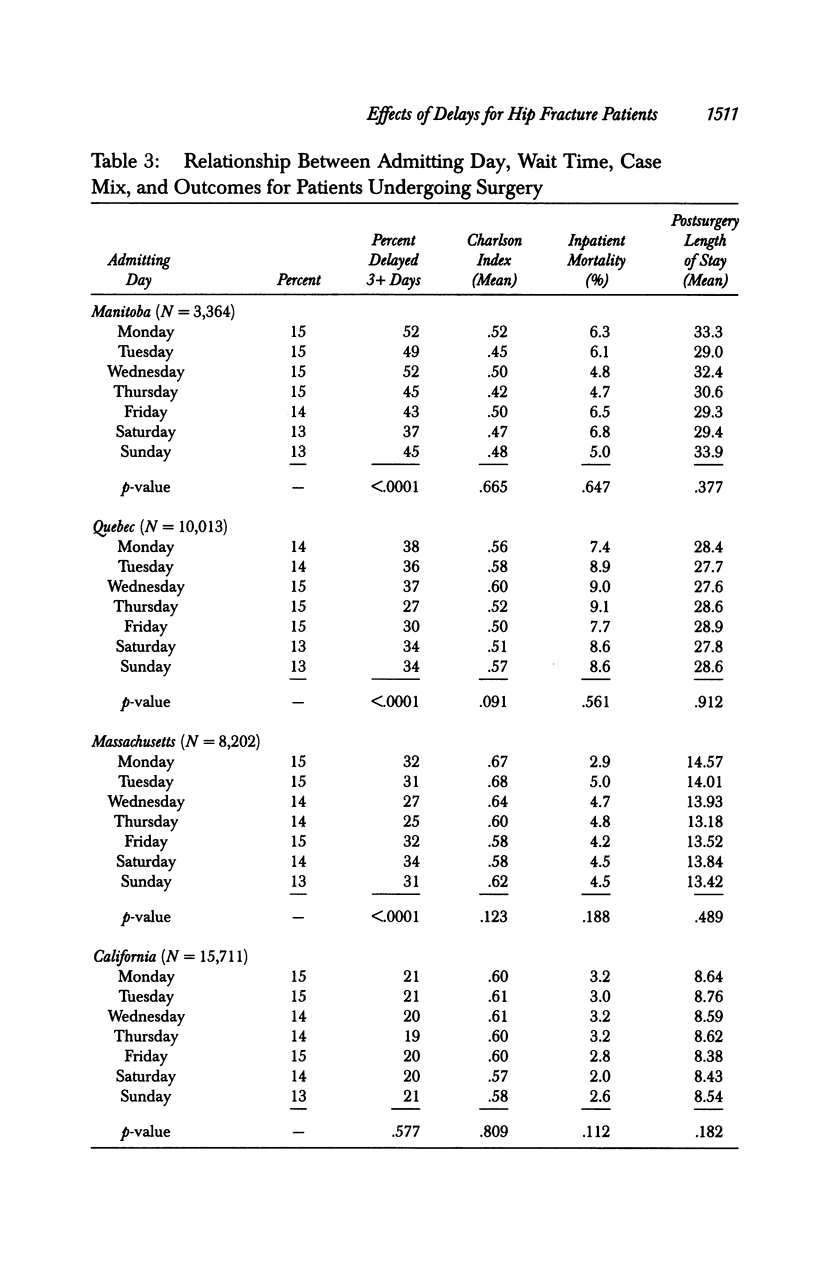
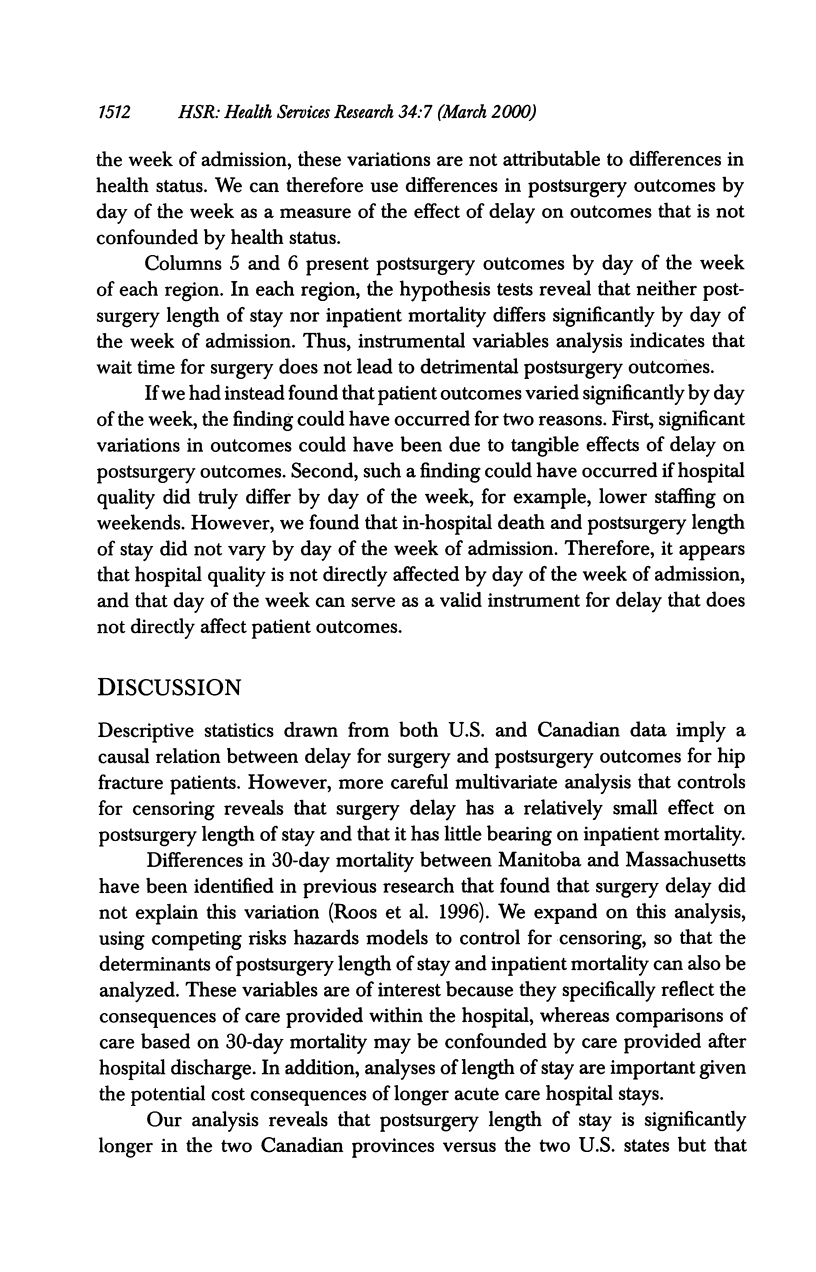
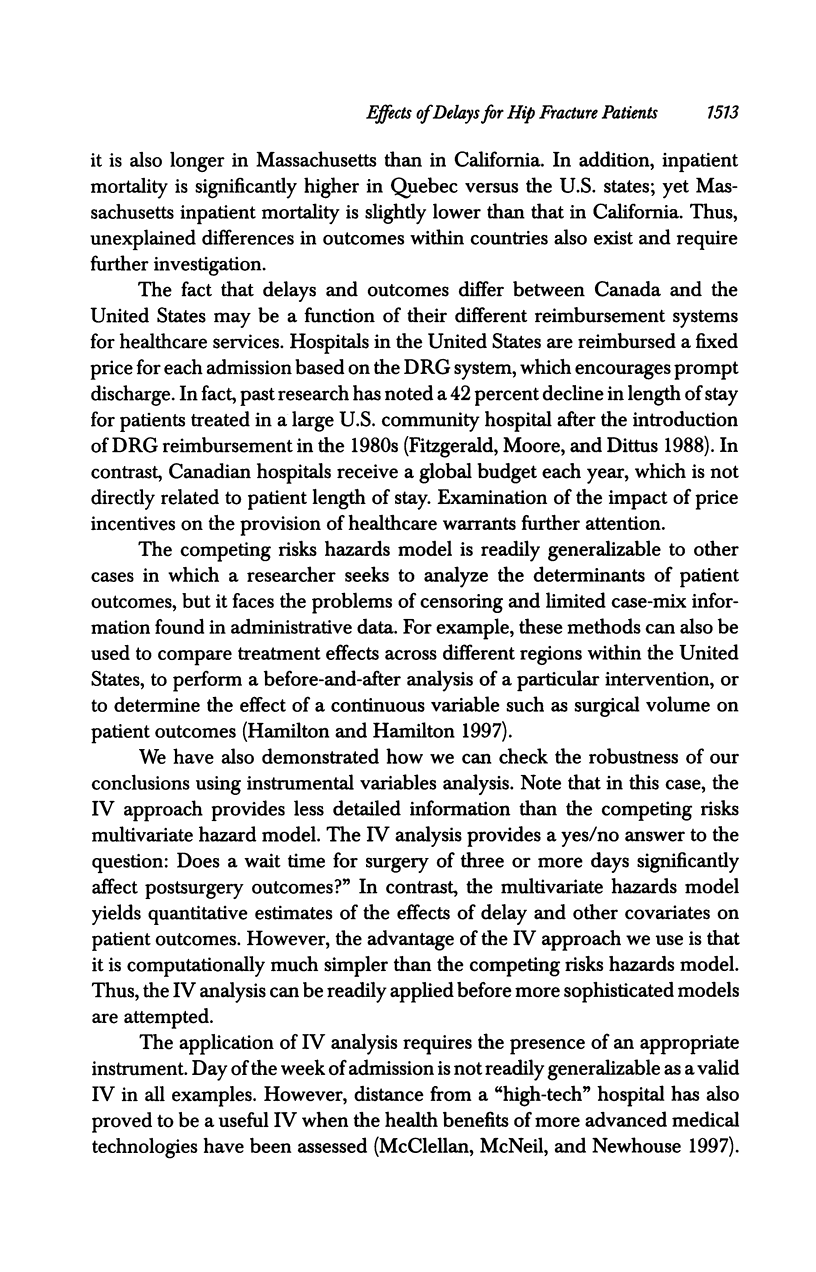
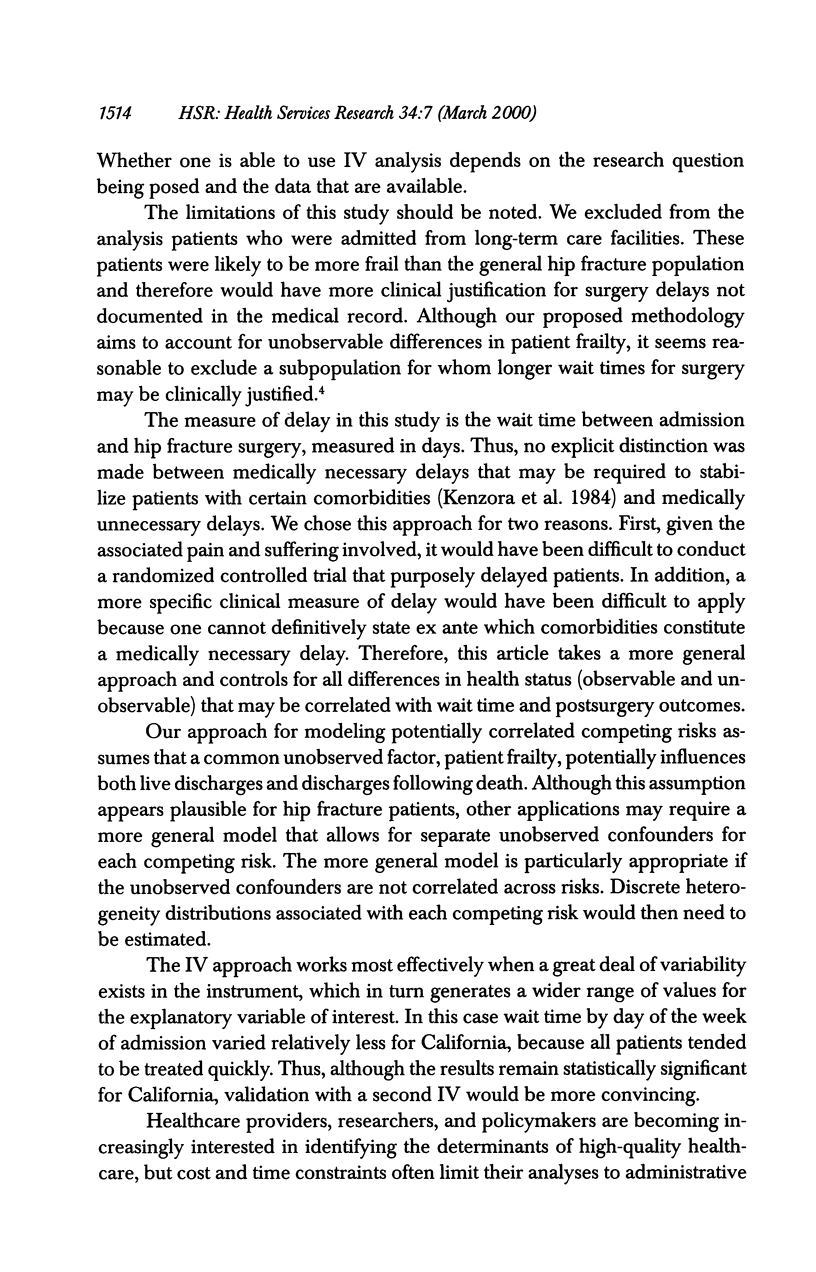
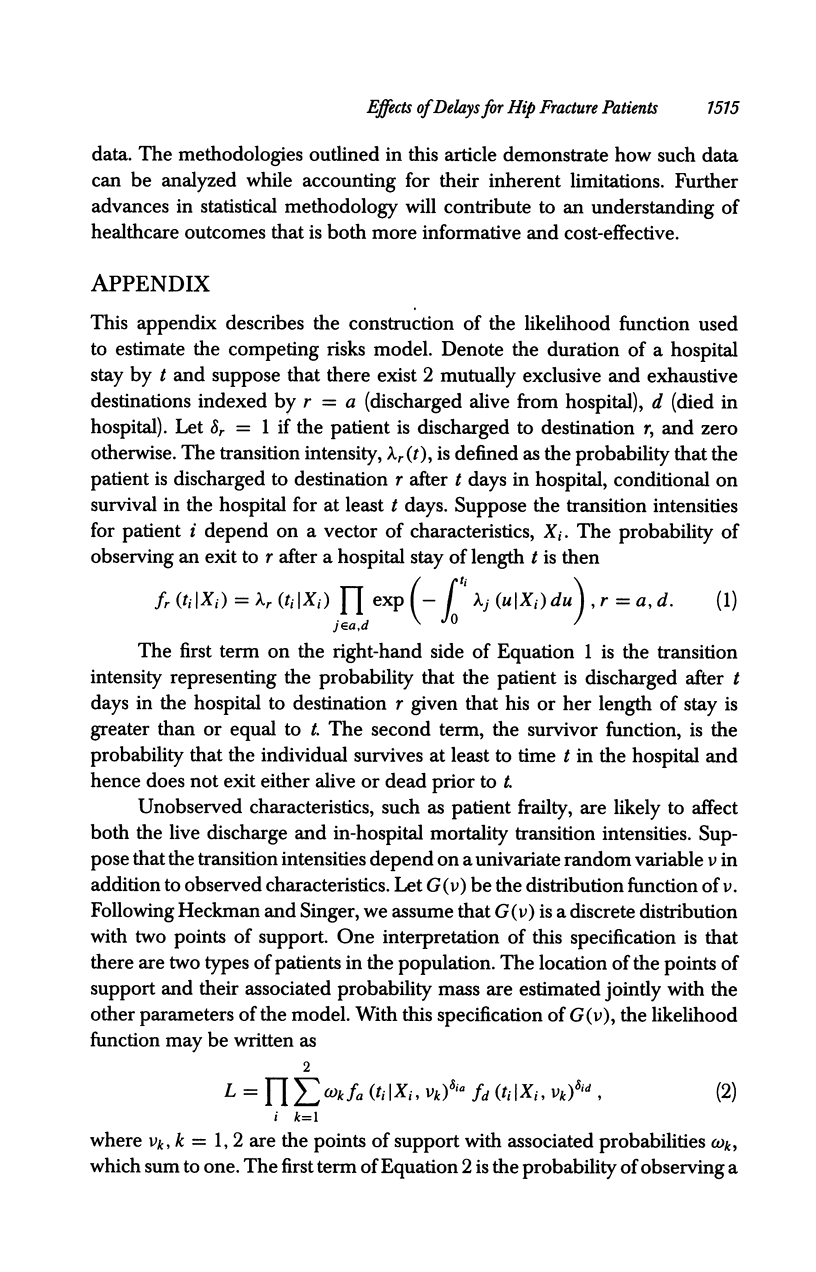
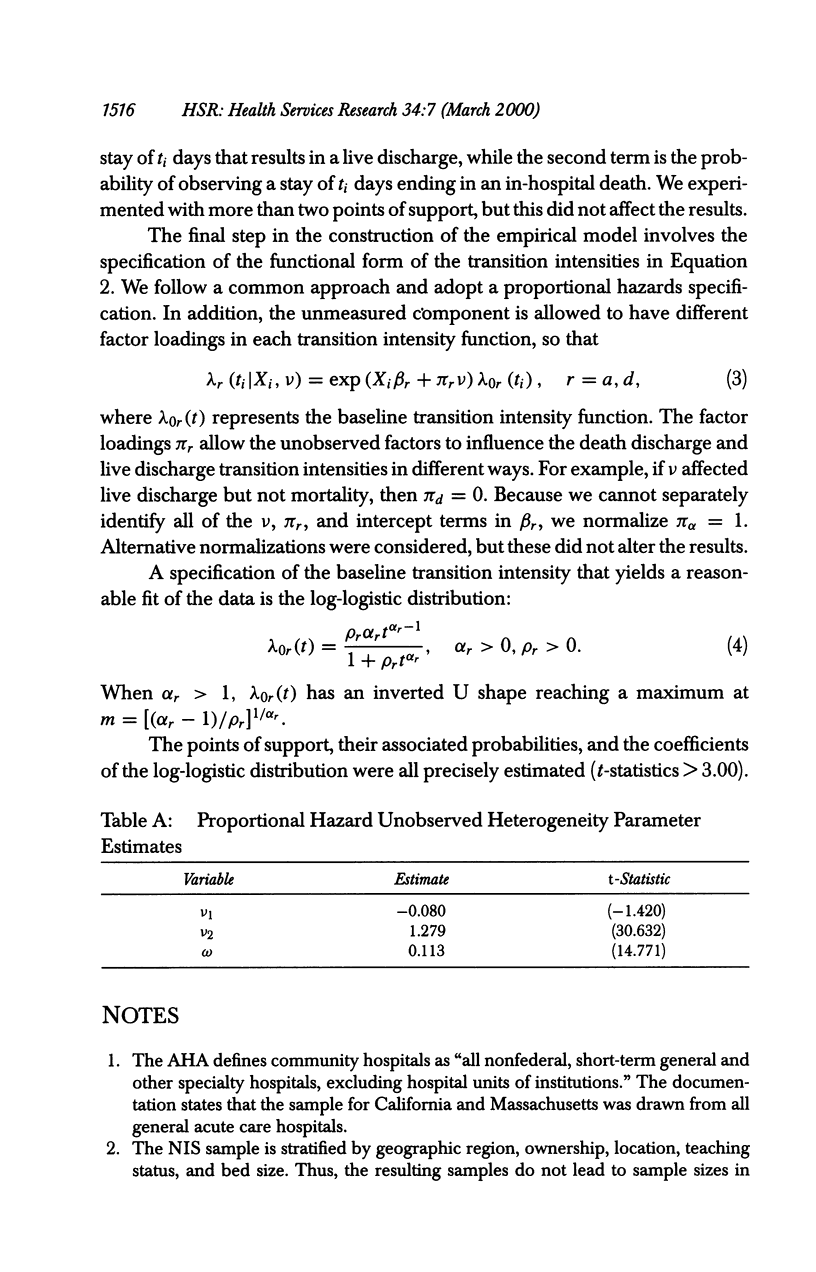
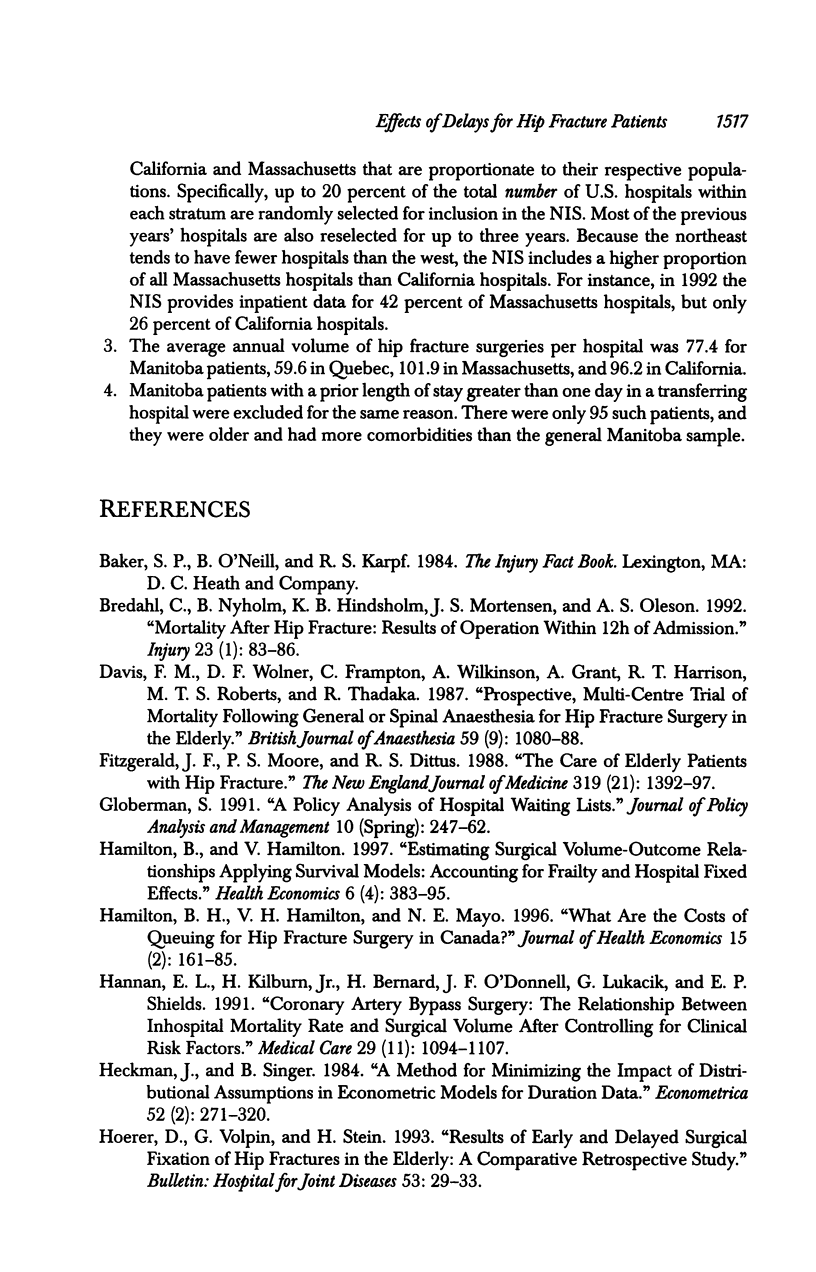
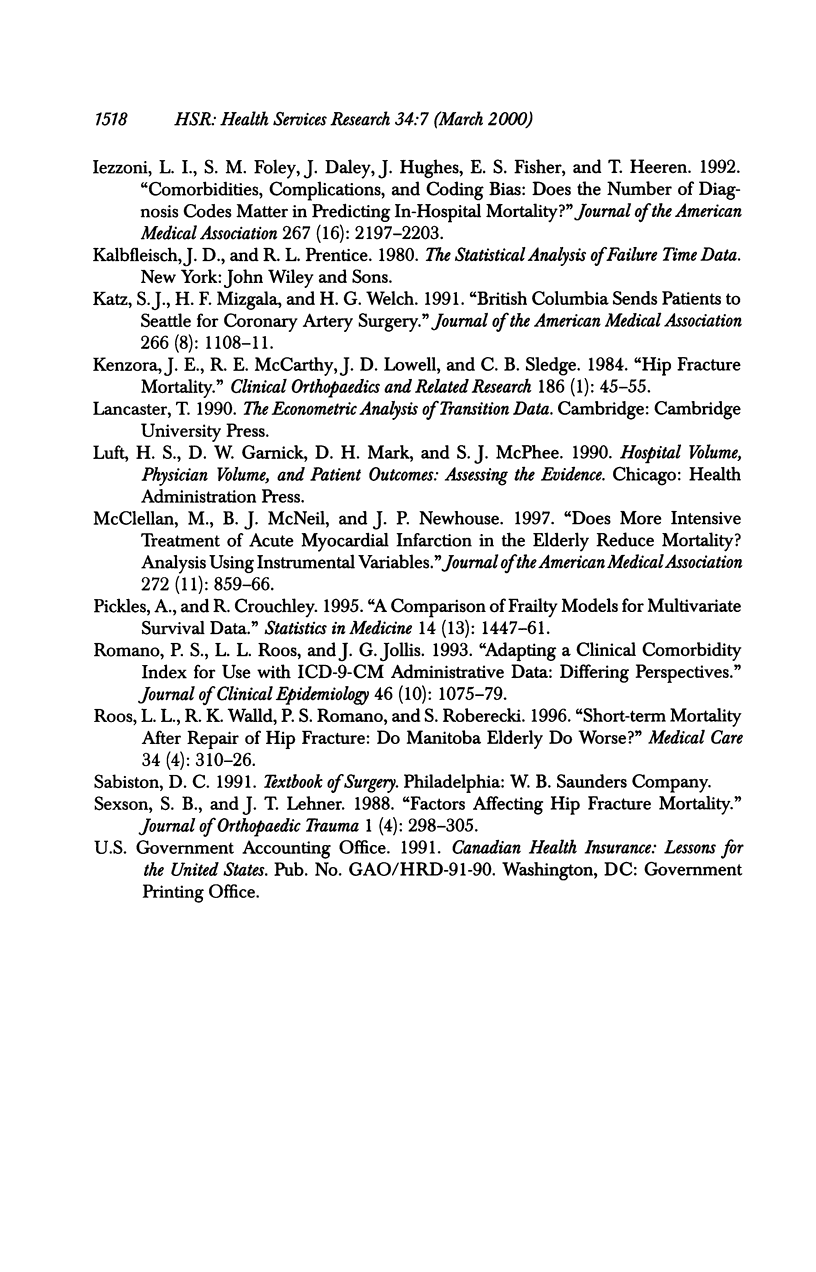
Selected References
These references are in PubMed. This may not be the complete list of references from this article.
- Bredahl C., Nyholm B., Hindsholm K. B., Mortensen J. S., Olesen A. S. Mortality after hip fracture: results of operation within 12 h of admission. Injury. 1992;23(2):83–86. doi: 10.1016/0020-1383(92)90037-s. [DOI] [PubMed] [Google Scholar]
- Davis F. M., Woolner D. F., Frampton C., Wilkinson A., Grant A., Harrison R. T., Roberts M. T., Thadaka R. Prospective, multi-centre trial of mortality following general or spinal anaesthesia for hip fracture surgery in the elderly. Br J Anaesth. 1987 Sep;59(9):1080–1088. doi: 10.1093/bja/59.9.1080. [DOI] [PubMed] [Google Scholar]
- Fitzgerald J. F., Moore P. S., Dittus R. S. The care of elderly patients with hip fracture. Changes since implementation of the prospective payment system. N Engl J Med. 1988 Nov 24;319(21):1392–1397. doi: 10.1056/NEJM198811243192106. [DOI] [PubMed] [Google Scholar]
- Globerman S. A policy analysis of hospital waiting lists. J Policy Anal Manage. 1991;10(2):247–262. [PubMed] [Google Scholar]
- Hamilton B. H., Hamilton V. H. Estimating surgical volume--outcome relationships applying survival models: accounting for frailty and hospital fixed effects. Health Econ. 1997 Jul-Aug;6(4):383–395. doi: 10.1002/(sici)1099-1050(199707)6:4<383::aid-hec278>3.0.co;2-l. [DOI] [PubMed] [Google Scholar]
- Hamilton B. H., Hamilton V. H., Mayo N. E. What are the costs of queuing for hip fracture surgery in Canada? J Health Econ. 1996 Apr;15(2):161–185. doi: 10.1016/0167-6296(95)00036-4. [DOI] [PubMed] [Google Scholar]
- Hannan E. L., Kilburn H., Jr, Bernard H., O'Donnell J. F., Lukacik G., Shields E. P. Coronary artery bypass surgery: the relationship between inhospital mortality rate and surgical volume after controlling for clinical risk factors. Med Care. 1991 Nov;29(11):1094–1107. [PubMed] [Google Scholar]
- Hoerer D., Volpin G., Stein H. Results of early and delayed surgical fixation of hip fractures in the elderly: a comparative retrospective study. Bull Hosp Jt Dis. 1993 Spring;53(1):29–33. [PubMed] [Google Scholar]
- Iezzoni L. I., Foley S. M., Daley J., Hughes J., Fisher E. S., Heeren T. Comorbidities, complications, and coding bias. Does the number of diagnosis codes matter in predicting in-hospital mortality? JAMA. 1992 Apr 22;267(16):2197–2203. doi: 10.1001/jama.267.16.2197. [DOI] [PubMed] [Google Scholar]
- Katz S. J., Mizgala H. F., Welch H. G. British Columbia sends patients to Seattle for coronary artery surgery. Bypassing the queue in Canada. JAMA. 1991 Aug 28;266(8):1108–1111. [PubMed] [Google Scholar]
- Kenzora J. E., McCarthy R. E., Lowell J. D., Sledge C. B. Hip fracture mortality. Relation to age, treatment, preoperative illness, time of surgery, and complications. Clin Orthop Relat Res. 1984 Jun;(186):45–56. [PubMed] [Google Scholar]
- McClellan M., McNeil B. J., Newhouse J. P. Does more intensive treatment of acute myocardial infarction in the elderly reduce mortality? Analysis using instrumental variables. JAMA. 1994 Sep 21;272(11):859–866. [PubMed] [Google Scholar]
- Pickles A., Crouchley R. A comparison of frailty models for multivariate survival data. Stat Med. 1995 Jul 15;14(13):1447–1461. doi: 10.1002/sim.4780141305. [DOI] [PubMed] [Google Scholar]
- Romano P. S., Roos L. L., Jollis J. G. Adapting a clinical comorbidity index for use with ICD-9-CM administrative data: differing perspectives. J Clin Epidemiol. 1993 Oct;46(10):1075–1090. doi: 10.1016/0895-4356(93)90103-8. [DOI] [PubMed] [Google Scholar]
- Roos L. L., Walld R. K., Romano P. S., Roberecki S. Short-term mortality after repair of hip fracture. Do Manitoba elderly do worse? Med Care. 1996 Apr;34(4):310–326. doi: 10.1097/00005650-199604000-00003. [DOI] [PubMed] [Google Scholar]
- Sexson S. B., Lehner J. T. Factors affecting hip fracture mortality. J Orthop Trauma. 1987;1(4):298–305. doi: 10.1097/00005131-198701040-00005. [DOI] [PubMed] [Google Scholar]


